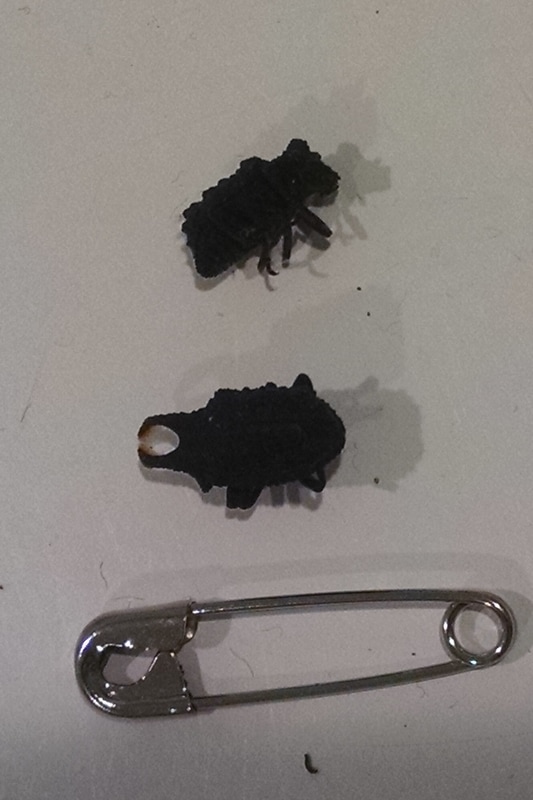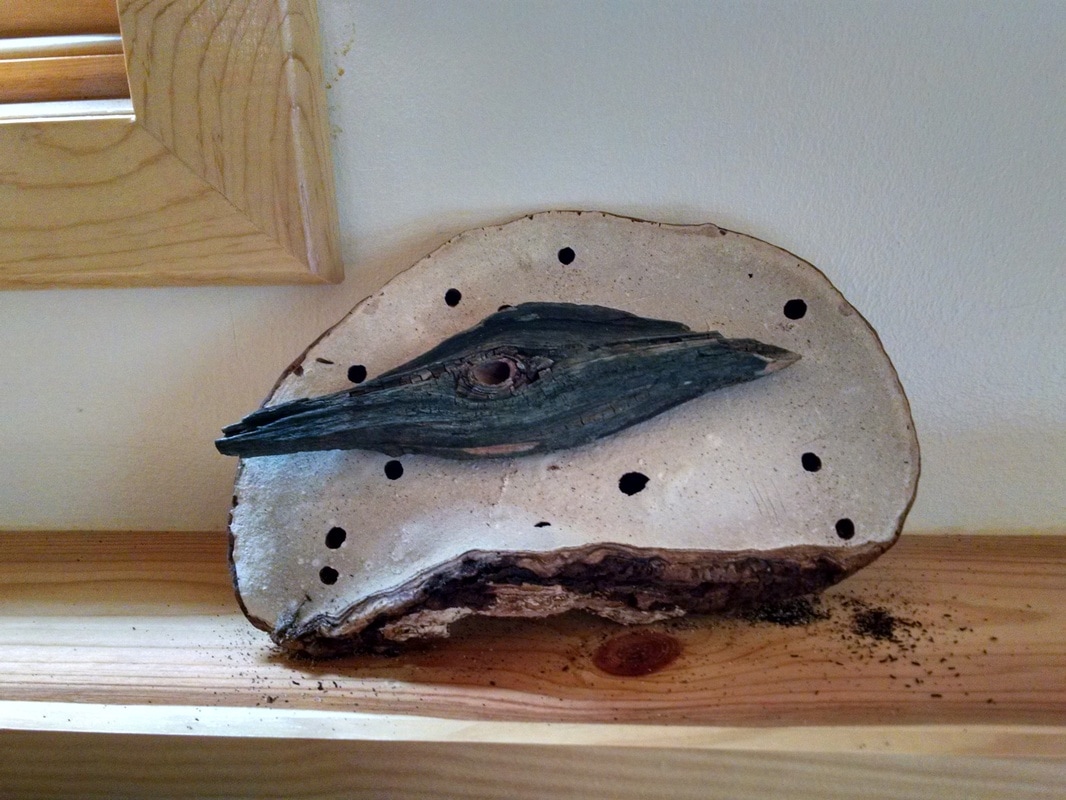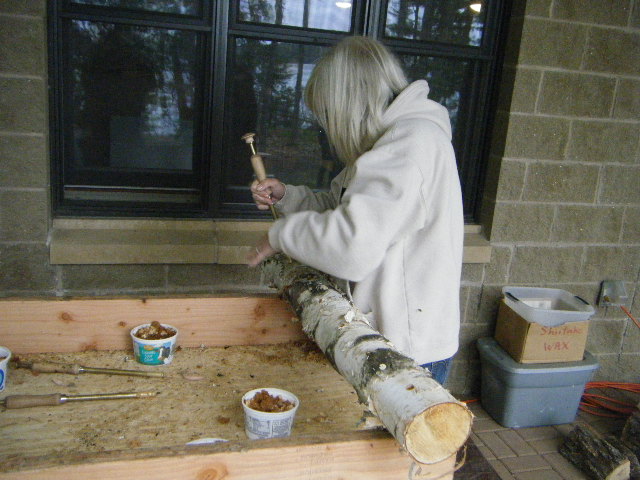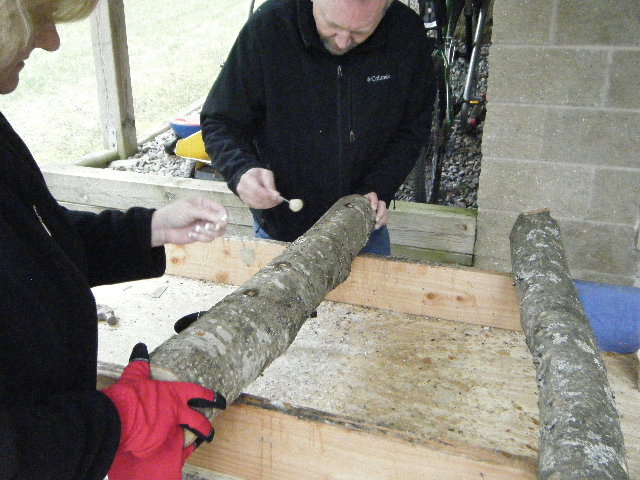The male of this species has two horns on its head and both sexes have a very bumpy surfaced, black body. The larvae and beetles live particularly in G. applanatum and can spend up to 9 years inhabiting one mushroom until it is honeycombed with tunnels. Check out this description of the bugs from UW Milwaukee's website.
Below are photos from club member Cynthia Krakowski who had a similar bug experience last fall with her artist shelf:)




 RSS Feed
RSS Feed